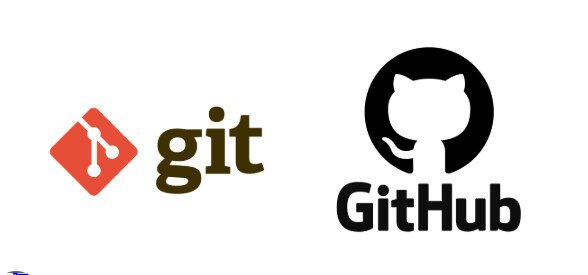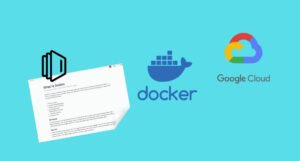Introduction to Git and GitHub Crash Course
Git and GitHub crash course version control is the heartbeat of modern software delivery, and no duo dominates the practice more than Git and GitHub. Git delivers lightning-fast, distributed change tracking; GitHub layers on a social cloud that turns those changes into an open dialogue. Together, they eliminate “works on my machine” headaches, empower remote teams, and protect every line of code you write.

A Quick History of Git and GitHub Crash Course
The blend of solid tooling and frictionless collaboration sparked a revolution that now influences every industry touching code. Git is a free, high-performance version-control system born in April 2005 by Linus Torvalds to manage the Linux kernel’s explosive growth for speed, strong data integrity, and support for distributed workflows. Three years later, GitHub arrived to wrap Git in a web interface that made repositories shareable, reviewable, and searchable from anywhere.
Installing Git in Minutes
On macOS, run
brew install gitFor Windows, grab the latest 64-bit installer
Depending on your distro’s equivalent of Linux, run
sudo apt-get install git -yAfter the installation, configure your identity:
git config --global user.name "Your Name"
git config --global user.email "you@example.com"
git config --global color.ui autoVerify you’re using the latest release
git --versionThe Six-Step Core Workflow
Initialize: turns a folder into a repo.
git initStage: queues changes.
git add .Commit: snapshots your code.
git commit -m "Describe work"Branch: isolates new ideas.
git checkout -b feature‑xMerge: folds work back to main.
git merge feature‑x Inspect: visualizes history.
git log --oneline --graphMemorize these six verbs: init, add, commit, branch, merge, log, and you already speak basic Git.
Cloning and Remotes: Connecting to GitHub
Create a new empty repository on GitHub, then link your local project:
git remote add origin https://github.com/<user>/<repo>.git
git push -u origin main
From here, git push publishes local commits, while git pull fetches upstream changes. The combo of Git and GitHub means every developer owns a complete local history yet syncs effortlessly with the shared truth online.
Essential Commands Every Pro Should Know
These commands turn raw commits into a polished, understandable timeline.
| Command | Why it Matters | One-line Example |
| git init | Initialize a new repository | git init |
| git status | Show current repo state | git status -sb |
| git diff | Preview edit before committing | git diff HEAD |
| git stash | Shelves unfinished work | git stash push -m “WIP” |
| git rebase | Rewrite history for a cleaner log | git rebase -i main |
| git cherry-pick | Lifts commit onto any branch | git cherry-pick <hash> |
| git tag | Marks releases | git tag v1.0.0 |
Branching Strategies That Scale
1.1 Feature‑Branch Flow
This is best for small teams: keep the main deployable, create a short‑lived branch for every task, and merge via pull request (PR).
1.2 Git Flow
Add develop, release, and hotfix branches to juggle parallel work streams—this is popular for products with strict versioning.
1.3 Trunk‑Based Development
Commit directly (or via micro‑branches) to the main several times daily, guarded by automated tests.
Choosing the right strategy depends on release cadence, team size, and risk tolerance, but all revolve around the same core mechanics of Git and GitHub Crash Course.
Pull Requests: Collaboration Made Easy
A pull request is both a code review tool and an audit trail. On GitHub, you can:
Push a branch: git push origin feature‑x.
Click Compare & pull request.
Request reviews, run CI checks, and discuss inline comments.
Squash‑merge to keep history tidy (optional git merge –squash locally).
PRs capture feedback, highlight conflicts, and ensure quality before code lands.
Automating Quality with GitHub Actions
GitHub Actions lets you define workflows in .github/workflows/*.yml. A simple CI job:
name: Node CI
on: [push]
jobs:
test:
runs-on: ubuntu-latest
steps:
- uses: actions/checkout@v4
- uses: actions/setup-node@v4
with: { node-version: 20 }
- run: npm ci
- run: npm test
Every push triggers unit tests, linters, or deployments, turning Git and GitHub into a full DevOps pipeline.
Security Best Practices
- Two‑Factor Auth: Lock down your GitHub account.
- Signed Commits: git config –global commit.gpgsign true for tamper‑evidence.
- Secret Scanning: GitHub flags committed keys instantly.
- Branch Protection: Require PR reviews and passing checks before merging.
Git’s SHA‑1 hashing already guards data integrity; GitHub’s extra layers help you sleep better at night.
GUI vs. CLI vs. AI—Choosing Your Toolkit
CLI mastery offers power and scriptability, but graphical clients (GitKraken, GitHub Desktop) ease visualization. Meanwhile, AI coding assistants like GitHub Copilot show >80 % adoption in enterprise pilots, boosting developer satisfaction and task completion, The GitHub Blog. Experiment to see which blend of tools lifts your productivity.
Troubleshooting Like a Ninja
The beauty of Git is that almost no mistake is permanent.
| Scenario | Quick Fix |
| Detached HEAD | git switch -c rescue-branch preserves work |
| Merge conflicts | git mergetool or manual edit ➜ git add ➜ git commit |
| Wrong commit message | git commit –amend (before pushing) |
| Pushed secrets | Rotate key ➜ git filter-repo –path ➜ force‑push |
| Huge binary bloats repo | Git LFS (git lfs install) |
Advanced Tips for Large Repos
These tricks ensure that Git and GitHub stay fast even with millions of lines of code.
- Sparse‑Checkout: Pull only the subdirectories you need.
- Partial Clone: –filter=blob:none keeps objects light.
- Commit Graph: Periodically run git gc –prune=now –aggressive to optimize.
- Monorepo best practices include codeowners files, modular builds, and path‑based CI.
Conclusion
You’ve just taken a whirlwind tour of Git and GitHub Crash Course origins, the six-step workflow, branching models, pull requests, CI automation, and security hardening. Master the core commands (init, add, commit, branch, merge, push, pull), adopt a workflow that suits your team, and sprinkle in automation with GitHub Actions. Keep practicing, keep experimenting, and you’ll move from a crash‑course newcomer to a confident version‑control pro ready to ship faster, collaborate smarter, and safeguard every line of your code.
Quick Cheat-Sheet Recap
# Start a repo git init && git remote add origin <url> # Daily loop git pull # sync git switch -c feat # create feature branch # code… git add . && git commit -m "feat: add X" git push -u origin feat # open PR on GitHub ➜ review ➜ merge git switch main && git pull && git branch -d feat





